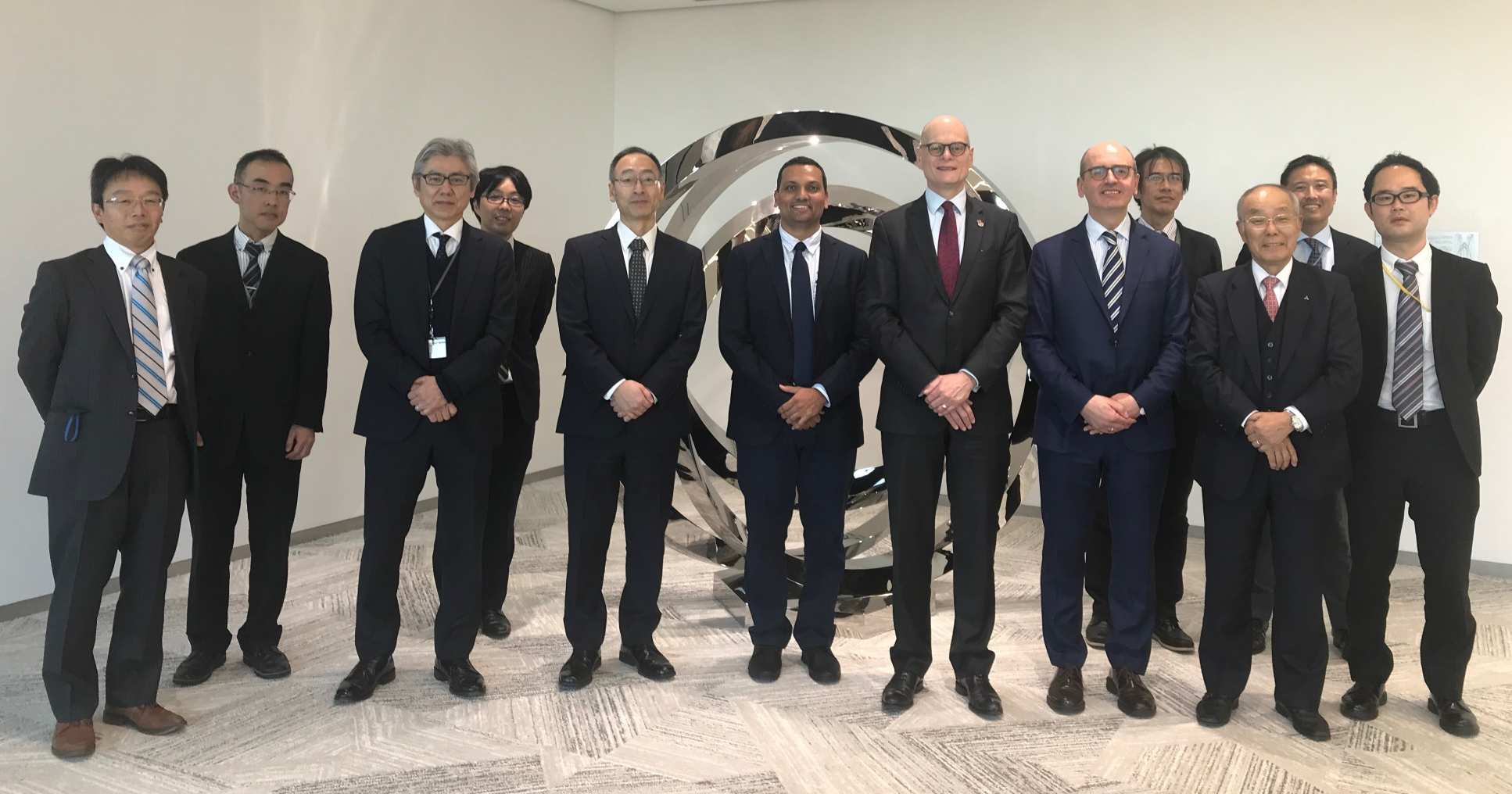Imperial and Mitsubishi launch turbocharger centre to develop cleaner engines

Imperial and Mitsubishi Heavy Industries (MHI) have launched a new research centre to improve turbocharger design and develop cleaner engines.
The MHIET-Imperial Future Boosting Innovation Centre will carry out detailed research on state-of-the-art turbocharger and exhaust energy technologies to improve engine performance and operation, and enable low carbon engine technology.
The multi-million pound programme involves more than 10 staff from Mechanical Engineering and will develop PhD studentships and further training for staff at Mitsubishi Heavy Industries Engine & Turbocharger (MHIET).
Imperial's Provost Professor Ian Walmsley formally launched the new Centre this week in Tokyo.
Professor Ian Walmsley, Provost of Imperial College London, said: “Imperial and MHI as partners in research have the potential to help drive the future of transport and power delivery.
"The new joint Centre will make engines cleaner and more efficient through innovative designs for turbochargers.
"This collaboration strengthens Imperial's growing connections with Japan, and we look forward to doing more together."

Atsushi Maekawa, President and CEO of Mitsubishi Heavy Industries Forklift, Engine & Turbocharger Holdings Ltd, said: “I hope this collaboration between Imperial and MHI will prosper not only in developing turbocharger technology at the new innovation centre but will also strengthen and grow our work in other fields and technologies.”
Imperial’s initial collaboration with MHI began in 2005 and has already yielded several new concepts and designs, one of which is already being used in several million vehicles.
The joint work has made substantial improvements in turbocharger design as a result of more advanced measurement techniques and simulation tools.
The Research Director of the new Centre is Professor Ricardo Martinez-Botas, who leads Imperial’s Turbo Group and the Thermofluids Division in the Department of Mechanical Engineering.
Professor Martinez-Botas said: “The work with MHI has not just advanced our understanding of exhaust turbochargers for cleaner engines, but it also has enabled new concepts to be created based on this understanding.
“My team has worked closely with a leading global player on real and significant problems. All of this makes impact at a large scale.”
The scope of the Centre will also look at the future of boosting, electrification and batteries, waste heat recovery system implementation and assessment of the future development trend for powertrains and automobile application.
Imperial and MHI
Imperial and MHI have collaborated together for 15 years. One of the most significant recent impacts has come from a new turbine, which has improved performance under pulsation and led to improvements in engine level fuel economy.
The conventional radial turbine has been replaced with a modified turbine blade in a new volute that brings out the system’s potential under a pulsating condition.
A joint patent on the volute was filed in 2013 and series production began in 2016. In the same year it received MHI’s Best Innovation Award.
The successful Imperial-MHI partnership has subsequently led to other concepts for MHI, including a new turbine nozzle and compressor volute.
More recently, a new testing procedure has been jointly implemented in the Turbocharge Technology Laboratory at Imperial, which could make significant improvements in our current understanding.
The partnership has also involved joint publications and PhD training.
Imperial and Japan
Imperial researchers have co-authored more than 1,000 publications with their Japanese peers over the past five years.
Imperial collaborates with a range of Japanese higher education institutions including the University of Tokyo, Kyoto University, Tokyo Institute of Technology, Osaka University and RIKEN, as well as the Japan Aerospace Exploration Agency (JAXA) and Japan Science & Technology Agency (JST).
Article text (excluding photos or graphics) © Imperial College London.
Photos and graphics subject to third party copyright used with permission or © Imperial College London.